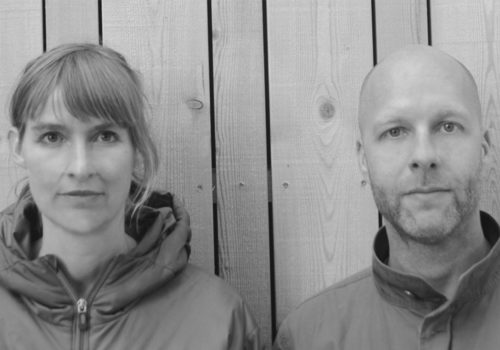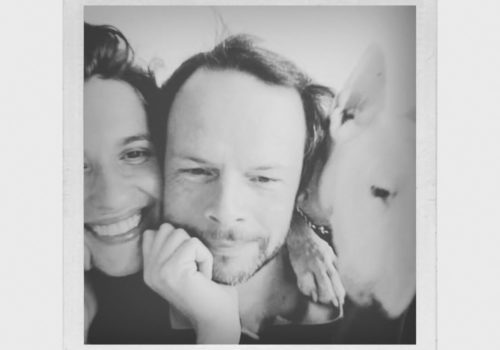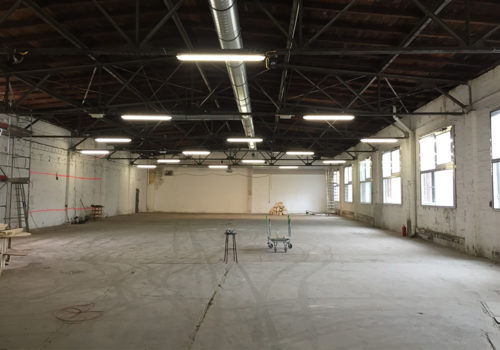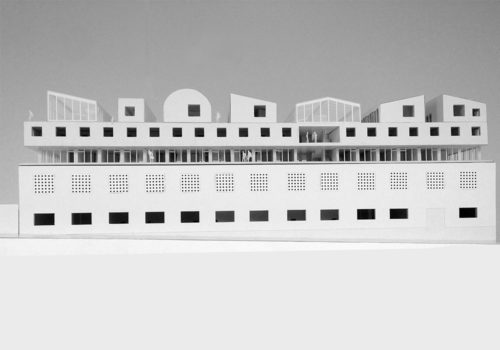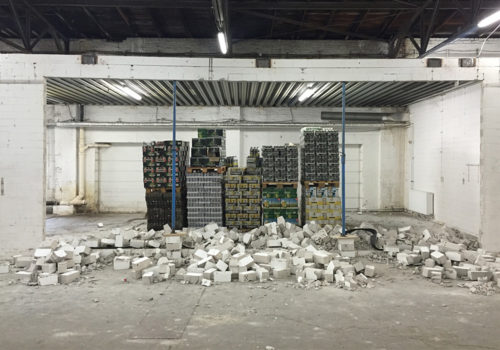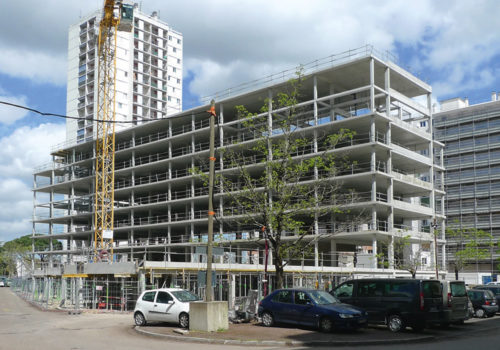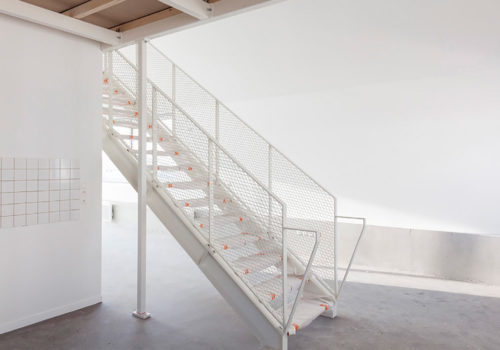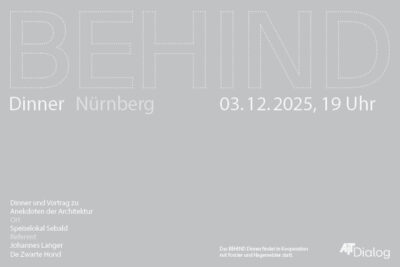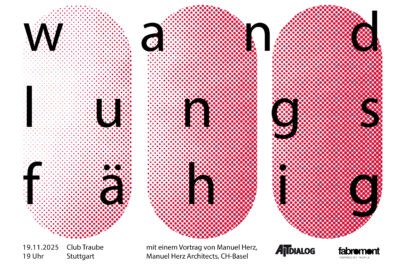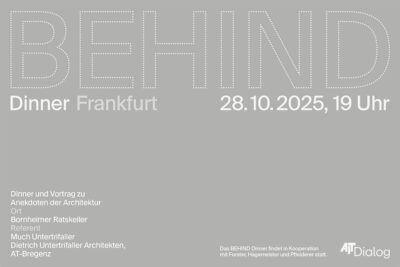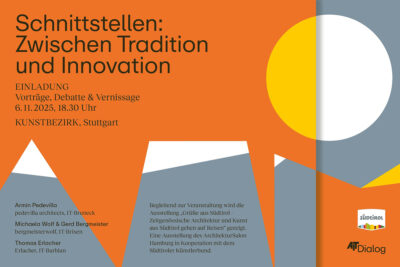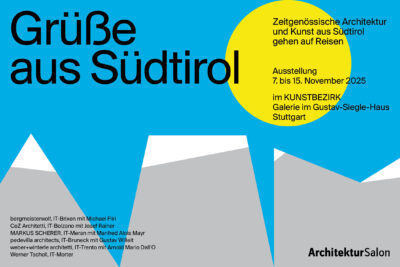Eine Frage an…
- Nanni Grau und Frank Schönert
- Antoine Carde und Siegrid Péré-Lahaille
Nanni Grau und Frank Schönert (Hütten & Paläste, DE-Berlin), Antoine Carde und Siegrid Péré-Lahaille (Éo, toutes architectures, FR-Bordeaux). Die Referenten des Symposiums “Bezahlbar besser wohnen. Transformation im urbanen Kontext” stellten sich in einem Kurzinterview unseren Fragen zum Thema Transformation und Urbanität:
In Zeiten von Wohnungsknappheit und stetig steigenden Mieten ist das Bestreben, erschwinglichen und gleichzeitig sozial verträglichen Wohnraum zu schaffen, enorm. Wie ist es trotz der beschränkten Bedingungen im kostengünstigen Wohnungsbau möglich, neue und ungewöhnliche Raumkonzepte zu realisieren?
Nanni Grau und Frank Schönert (Hütten & Paläste, DE-Berlin):
Insbesondere die Prästrukturen (Organisations- und Entscheidungsstrukturen/ Finanzierungmodell/ Grundbesitz) eines Projektes entscheiden darüber, wie sozial und kostenverträglich ein Projekt entwickelt werden kann. Wichtig erscheint uns insbesondere mit andern Formen des Eigentums zu experimentieren z.B. Erbbaurecht, sodass sich die stark gestiegenen Grundstückskosten, die in den Metropolen vorherrschen, nicht auf die Baukosten niederschlagen und günstige Mieten ermöglicht werden können.
Die Realisierung in genossenschaftlicher Organisation fördert dazu die Umsetzung gemeinschaftsorientierter Nutzungen und Wertevorstellungen, die auch architektonisch zu
neuen Formen des Zusammenlebens entwickelt werden können.
In times of housing scarcity and continuously rising rents, the ambition to create affordable and socially compatible housing spaces, is enormous.How would it be possible to realize new and unusual space concepts for affordable housing despite the restricted conditions?
Antoine Carde und Siegrid Péré-Lahaille (Éo, toutes architectures, FR-Bordeaux):
It’s a very simple question: you just need a good client! If the project owner shares these concerns, it is then possible to orient the project economy towards the quality of use, on a radical way. The case of social housing is more complex because the end customer is not only the landlord but also the inhabitants!
In this context, the participatory approach makes sense. For the project Locus Solus, Aquitanis, the project owner, has initiated this process. The group of inhabitants, constituted from the beginning of the project, is a real group of experts of the inhabited. Its even more relevant given the fact they are tenants so the question of the inheritance does not arise. It is just a question – even if the task is not simple! – of making emerge a word and to transform it into space. This word answers, casually, to essential questions such as the relation to the world that one wishes … Radical choices can be made, exactly as one would do for himself.
As a result, the issue of “visual aesthetics” takes a backseat to privilege an aesthetic of function.
It’s always a matter of aesthetics, but it’s a shift towards the function. For us, this change seems to be a key element in the question asked: one often wonders where to find the financial means within the framework of a given budget to propose more interesting housing whereas a non-negligible part of these means is often devoted to “dress-up” a building. Who, usually doesn’t need that much!
In fact, it is, on one hand to direct the budget towards the principal … on the other hand, to reduce the accessory, without forgetting the detail.
The construction of housing is largely dominated by habits: recipes are used. The problem in that these recipes are given by building companies and, as they are masons, they are recipes in … concrete! It is essential that architects take over the technical choices. For example, for Locus Solus, we used proven technical solutions, but in other fields than the housing, such as metal cladding on decks for facades, or metal floors for duplexes. This way of doing things is not new since Jean Nouvel in Nemausus projetc used it 30 years ago and Anne Lacaton and Jean Philippe Vassal have proved its effectiveness. And yet … we continue to see concrete walls that cost horribly expensive, in addition to making any subsequent changes impossible … It should be noted that the use of atypical techniques, even high performance, is hardly compatible with obtaining building quality labels: certification bodies apply the same recipes; it’s so much easier! As part of the Locus Solus project, Aquitanis agreed not to apply for H&E certification, which deprived it from funding. As we said, you need a good customer!
Welche Rolle spielen dabei die Transformation von Bestandsimmobilien? Und welche Chance sehen Sie darin?
Nanni Grau und Frank Schönert (Hütten & Paläste, DE-Berlin):
Bestandsimmobilien haben bereits einen Charakter und eine spezifische Verbindung zum Kontext. An diesen kann angeknüpft werden. Sie beinhalten ein Set an Möglichkeiten der Weiter- und Umnutzung.
Wir versuchen mit möglichst geringen Eingriffen, was ein umfassendes Verstehen der Bestandsimmobilie voraussetzt, die positiven Eigenschaften zu verstärken oder sie gar neu zu interpretieren. Ökonomische Aspekte erfordern eine sehr nahe Orientierung/ Nutzung an der bestehenden baulichen Struktur (Hardware).
How can the architects and urban planners transform the already existing housing complexes in order to create affordable and socially compatible housing spaces? And which opportunities do you see?
Antoine Carde und Siegrid Péré-Lahaille( Éo, toutes architectures, FR-Bordeaux) :
In the first place, even if it does not answer the question, we must stop demolishing without thinking! But keeping is not limited to keeping the building … it also means starting from the history of the place, its inhabitants and so on. In other words, it supposes to disregard it is a-priori and to realize a real inventory of the existing situation. And it is also the case in new construction! It is a question of adding, in the manner of the “Plus” of Anne Lacaton and Jean Philippe Vassal or the “cells” of Chanéac. Adding is a real opportunity! We start from something that, in principle, works more or less and on which we will add “other” spaces that will allow another “inhabited”. Here also, we can no longer ignore the inhabitants; we can no longer “think in their place”. It’s about making “tailor-made” without compromise. And it’s complicated! It is actually a process that can be extremely frustrating as well: some tenants are satisfied with their housing – and often with reason. It’s about knowing how to do nothing, too. But in any case, it is a question of starting from the inside, from the inhabitants, and no longer from the master plan, which is a tool of urban policy. The so-called stabilobos syndrome whose line width corresponds to an avenue!
In addition, it is also the opportunity to invest other territories such as roofs for example: it is an old dream of the moderns that has not really found outlets. Let’s bet that the scarcity of land and the fashion of roof-tops will allow this conquest.
Sie zeigen mit dem von Ihnen entworfene Projekt CRCLR House, dass eine räumliche und ästhetische Aufwertung möglich ist. Was unterscheidet Ihr Projekt von anderen Wohnungsbauprojekten?
Nanni Grau und Frank Schönert (Hütten & Paläste, DE-Berlin):
Dem Projekt liegt eine starke Vision gemeinschaftlichen Lebens und Arbeitens zugrunde, die von den Nutzern und zukünftigen Bewohnern im Kollektiv entwickelt wird. CRCLR House ist ein offener, experimenteller Raum für lokale Produktionssysteme, kollaborative Arbeitsweisen, smarte Nutzungen von Ressourcen, zirkuläre Geschäftsmodelle sowie verschiedene Wohnformen.
Wohn- und Gewerbenutzungen werden anhand von Kreislaufprozessen vielfältig miteinander verbunden. Soziale und ökologische Zielsetzungen stehen im Vordergrund, das Verantwortungsgefühl für das Projekt, aber auch für die nähere Umgebung und den Kiez ist sehr hoch. Für diese neuartige Nutzung konnte eine spezifische Architektur entwickelt werden.
With your project Locus Solus you show that spatial and esthetical revaluation can work through new innovative space concepts. How does your project differ from other housing projects?
Antoine Carde und Siegrid Péré-Lahaille (Éo, toutes architectures, FR-Bordeaux) :
If the design of the apartments, apart from the fact that they are made exactly according to the wishes of the inhabitants does not really differ from the operations carried out by Lacaton Vassal (proportionately!), it is really the taking into account of the collective that is singular in this residence. It was, from the beginning, a desire for project management, particularly through the implementation of a participatory approach that we developed. By collective, one must understand the group of inhabitants but also the local residents. It was a question of proposing spaces of “fringes” of fuzzy spaces where the public / private limit, existing / new, particular / collective is voluntarily disturbed.
This supposed to be posed with delicacy on this site which is only a banal carpark … and, it is precisely considering it as a site carrying existing practices that one could try to realize an extension of the existing rather than a “tabula rasa”. This has resulted in amazing spatial situations where, for example, the lobby at the ground level is not really inside the building – even though there are mailboxes and a mirror that confirm an interiority – not really in the car park – even if the bitumen coating seems to invalidate it … In the same way, the common room is largely open on the forecourt, generously open to the public.
The choice of a real post-and-beams structure allows this flexibility; beyond that, it would make it possible to convert this residence into something else.
This same redefinition of limits is present in the program. The success of a housing building begins with the quality of its program. It may seem paradoxical because, if it is housing, it should not be a question of program: it’s housing, so it’s a housing program: that’s it. However, we are convinced that it is essential to mix the programs and avoid the “monofunctional”. In the “historic” city the functions are often mixed and not only at the foot of the building. The Parisian courts welcomed and sometimes still welcome craft activities as can be seen in Truffaut’s films. And that changes everything ! A court changes its status from “common parts” to “semi-public space”. This is what was achieved in our “Orea” project with Aquitanis as contractor, with a courtyard open to the public that hosts an orchard. In the same way, it is unfortunate that one can‘t establish liberal professions or business premises at home whereas it is something common in the traditional city. Programming is the prerogative of the contractor, within the limits of what it can legally do … In the case of the Locus Solus project, also with Aquitanis, we could “mix” the functions: a day care center,, office spaces … We bet that it will be a source of wealth for the inhabitants and, beyond, for the neighborhood.
The collective housing is still considered as a solution of lesser evil: we still lack, at least in France, of emblematic examples that would change this perception even though we think collective housing may be a chance if we give the possibility!
All these devices confer a singularity to the project which proceeds from the same spirit: that of a truth in the treatment. This building does not cheat. It clearly highlights these intentions, without makeup: the pipes are apparent, the materials chosen for their capacity and not for their appearance, the indefinite spaces are designed for their quality and not only for their use and so on.
It gives the building an aesthetic that has been described as “platypus”.
Hütten & Paläste
Éo, toutes architectures






